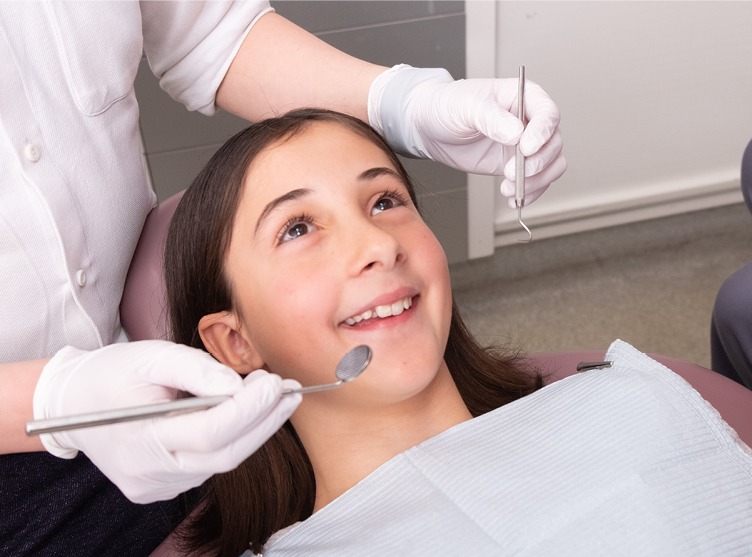Not known Details About Legacy Orthodontics
Not known Details About Legacy Orthodontics
Blog Article
An Unbiased View of Legacy Orthodontics
Table of ContentsThe smart Trick of Legacy Orthodontics That Nobody is DiscussingGet This Report on Legacy OrthodonticsSome Ideas on Legacy Orthodontics You Should Know3 Simple Techniques For Legacy OrthodonticsTop Guidelines Of Legacy Orthodontics
At Advanced Orthodontics, we give clients with a alternative treatment experience. In addition, we provide flexible treatment timetables, flexible repayment choices and an enjoyable, satisfying experience. orthodontist. Call ( 480) 357-4900 today to learn more and timetable a visit.An orthodontist is a dental practitioner trained to detect, prevent, and deal with teeth and jaw abnormalities. They deal with existing problems and are trained to recognize problems that may develop in the future. Orthodontists collaborate with individuals of all ages, from youngsters to adults. Individuals often connect an ideal smile with healthiness.
Malocclusion, or misaligned teeth, can result in oral issues, including dental caries, periodontal condition, and difficult or agonizing eating. Not everyone is born with straight teeth. If you have a negative bite or huge areas between your teeth, you may desire to consult a dental practitioner specializing in orthodontic treatment.
The Main Principles Of Legacy Orthodontics
( Photo Credit Rating: DigitalVision/Getty Images) Orthodontists use taken care of and detachable dental tools, like braces, retainers, and bands, to change the setting of teeth in your mouth. Orthodontic therapy is for oral problems, consisting of: Crooked teethBite issues, like an overbite or an underbiteCrowded teeth or teeth that are too much apartJaw misalignmentThe goal of orthodontic treatment is to improve your bite.
A healthy and balanced bite ensures you can consume, chew, and talk effectively. While you might think about orthodontists as primarily for children or young adults who need dental braces, they can correct oral problems at any age. Orthodontists attend university, oral school, and orthodontic school. After college graduation, they spend 2 or 3 years in an orthodontic residency program.
All orthodontists are dental experts, but not all dental professionals are orthodontists. Orthodontic residency programs provide intensive, concentrated instruction for oral specialists. They concentrate on 2 locations: How to correctly and securely move teeth How to appropriately lead growth in the teeth, jaw, and faceOnce an orthodontist has actually completed training, they have the alternative to come to be board accredited.
Everything about Legacy Orthodontics
Imbalance, or malocclusion, is the most typical factor individuals see an orthodontist. It is hereditary and is the result of dimension distinctions in between the top and lower jaw or between the jaw and teeth. Malocclusion causes tooth congestion, an irregular jaw, or uneven bite patterns. Malocclusion is generally treated with: Your orthodontist attaches steel, ceramic, or plastic square bonds to your teeth.
Some individuals need a headwear to aid relocate teeth into line with stress from outside the mouth. A retainer is a personalized gadget that keeps your teeth in area.
They're frequently utilized on children. They can develop added room in the mouth without needing to pull teeth. If you have a severe underbite or overbite, you might need orthognathic surgery (likewise called orthodontic surgery) to extend or reduce your jaw. Orthodontists utilize wires, surgical screws, or plates to support your jaw bone.
You may need to see an orthodontist if you have: Crowding or not adequate space for all of your teethOverbite, when your top teeth come over your base teethUnderbite, when your base teeth are too much forwardSpacing or problems with gapsCrossbite, which is when your top teeth fit behind your bottom teeth when your mouth is closedOpen bite or a vertical space between your front bottom and top teethMisplaced midline, when the center of your bottom and upper teeth do not line up Dealing with a dental malocclusion can: Make attacking, chewing, and talking easierImprove the proportion of our face and your total appearanceEase pain from temporomandibular joint problemsSeparate your teeth and make them simpler to cleanse, helping avoid dental caries or dental caries It's commonly a dental expert who first notices misaligned teeth during a regular examination.
Not known Factual Statements About Legacy Orthodontics

During your very first orthodontic examination, you'll likely have: A dental examPhotos taken of your face and smileDental X-raysPanoramic (360 degree) X-rays of your face and headImpressions to create molds of your browse around here teethThese examinations will certainly aid your orthodontist know just how to wage your treatment. leesburg clear braces. An orthodontist is a dental expert who's had training to treat your teeth and jaw
An orthodontist is concentrated on your bite, so something like a broken tooth would be handled by a dentist. Orthodontists are concentrated on your bite, or the way your teeth fit together, and the straightness of your teeth.
Ever before wondered how celebrities constantly appear to have perfectly straightened teeth? The solution usually exists in the knowledgeable hands of an orthodontist. Yet just what does an orthodontist do? Orthodontists are oral professionals that focus on correcting abnormalities in the teeth and jaws. Their knowledge goes past simply producing an attractive smile; it encompasses enhancing your general oral health and wellness and function.
Legacy Orthodontics - Questions

While dental braces are the most generally acknowledged orthodontic therapy, orthodontists have a diverse toolkit at their disposal. The particular method chosen relies on the seriousness of the instance, the client's age, and private preferences. These reliable dental braces use a system of brackets adhered to the teeth and connected by wires.
Clear aligners, like Invisalign, are a popular option for patients seeking a much more discreet treatment choice. These removable trays are customized to progressively shift the teeth's setting. Headgear may be utilized combined with dental braces or aligners to use added targeted forces, especially for remedying jaw discrepancies. In cases of slim jaws, palatal expanders can be made use of to produce space for appropriate tooth alignment.
Report this page